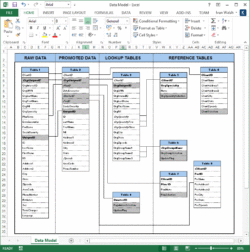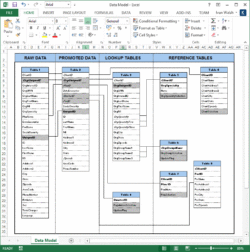So, you’re embarking on a database development journey? That’s fantastic! But before you dive headfirst into designing tables and writing queries, let’s talk about something that’s often overlooked, but absolutely critical: documentation. Think of it as your map and compass, guiding you and your team through the intricacies of your database. Without it, you’re essentially wandering in the dark, and that’s a recipe for disaster, especially when future developers need to understand or modify your work.
Creating comprehensive database documentation might seem daunting, but it doesn’t have to be. The key is to have a structured approach and a reliable template to guide you. A database development documentation template acts as a blueprint, ensuring you capture all the essential details about your database, from its purpose and design to its implementation and maintenance. It’s about creating a living document that evolves alongside your database, providing clarity and consistency for everyone involved.
This article will explore the importance of database development documentation and how a well crafted template can streamline the process. We’ll delve into the key elements that should be included, why they matter, and how to effectively use a template to create documentation that’s both informative and easy to navigate. Get ready to transform your database development process from a chaotic scramble into a well-organized and easily maintainable project!
Why Use a Database Development Documentation Template?
Imagine trying to build a house without blueprints. Sounds chaotic, right? The same applies to database development. Without proper documentation, you’re essentially building a complex system without a clear understanding of its components, their relationships, and their purpose. This is where a database development documentation template comes in to play. It provides a structured framework for recording all the crucial information about your database, ensuring clarity, consistency, and maintainability throughout its lifecycle.
Think about the future. What happens when you move on to another project, and someone else needs to maintain or modify your database? Or even worse, what happens if you need to revisit the database after a long hiatus? Without documentation, it’s like deciphering an ancient code. You’ll waste valuable time trying to understand the database’s structure, purpose, and functionality. A good template helps avoid all that.
A comprehensive template ensures that everyone involved in the database development process is on the same page. It facilitates communication between developers, database administrators, project managers, and even end users. By having a single source of truth, you can minimize misunderstandings, reduce errors, and streamline collaboration.
Moreover, thorough documentation becomes invaluable during troubleshooting and debugging. When issues arise, you can quickly refer to the documentation to understand the database’s design, constraints, and dependencies. This allows you to identify the root cause of the problem more efficiently and implement the necessary fixes, saving time and resources.
Consider the compliance aspect as well. In many industries, regulatory requirements mandate proper documentation of data systems. A well structured template helps you meet these requirements by ensuring that all necessary information is captured and readily available for audits and compliance checks. Using a database development documentation template is not just a nice to have, but often a business necessity.
Key Elements of a Database Documentation Template
Now that we’ve established the importance of a database development documentation template, let’s explore the key elements that should be included. These elements will ensure that your documentation is comprehensive, informative, and easy to navigate.
First and foremost, you need a clear overview of the database’s purpose and scope. This section should explain the business problem the database is intended to solve, the target users, and the overall functionality it provides. Think of it as the executive summary of your database project.
Next, include a detailed description of the database schema. This should cover all the tables, columns, data types, primary keys, foreign keys, and relationships between tables. A visual representation of the schema, such as an entity relationship diagram (ERD), can be extremely helpful in understanding the database structure at a glance.
It’s crucial to document the data constraints and validation rules. This includes information about data types, lengths, allowed values, and any business rules that govern the data. This section helps ensure data integrity and consistency.
Include a description of all stored procedures, functions, triggers, and views. For each object, document its purpose, input parameters, output values, and any relevant logic. This is essential for understanding how the database processes and manipulates data.
Finally, document the security considerations for your database. This includes information about user roles, permissions, and any security measures implemented to protect sensitive data. This section is critical for ensuring the confidentiality, integrity, and availability of your data.
Remember to keep the documentation up to date as the database evolves. Regularly review and update the documentation to reflect any changes to the schema, data constraints, or functionality. This ensures that the documentation remains accurate and relevant over time.
Documenting your database development process with a database development documentation template is an investment. It saves time, reduces errors, and promotes collaboration. It’s about creating a valuable resource that supports your database throughout its lifecycle.
In conclusion, the value of thorough documentation cannot be overstated. It fosters understanding, promotes collaboration, and ultimately contributes to the success of your database projects.



